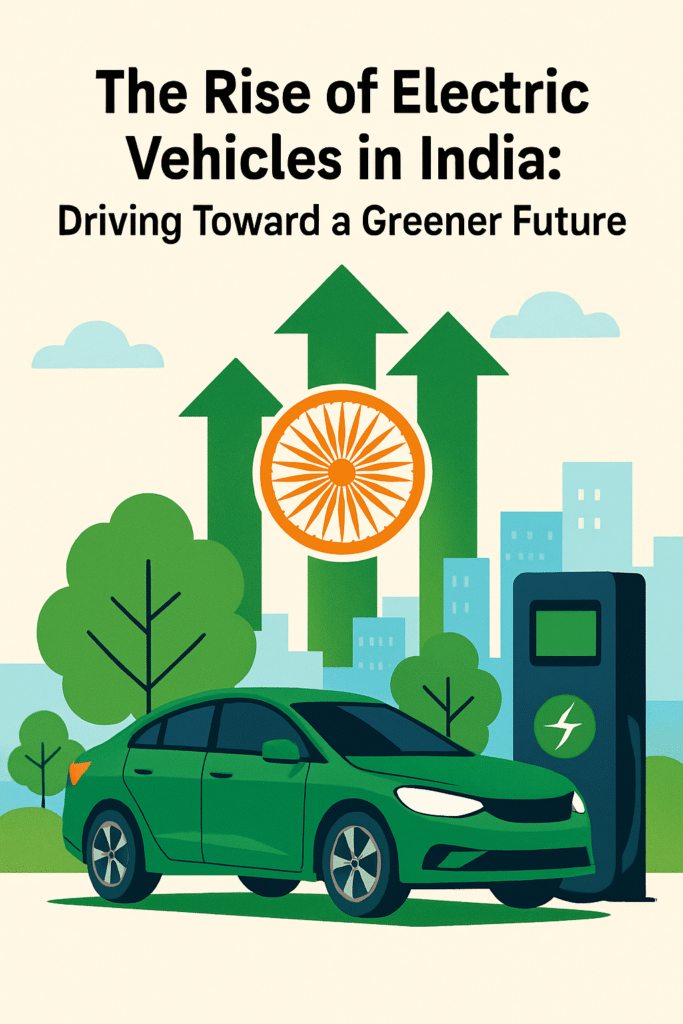
The Rise of Electric Vehicles in India: Driving Toward a Greener Future
India stands for removing pollution by adopting electric vehicles. India’s population is growing economically. So, pollution is increasing. Some government policies have increased the demand for electric vehicles. It is a fast-growing industry.
Government Support: The Engine Behind the Movement
The government initiated a support system for consumers and manufacturers by offering purchase subsidies, tax incentives and infrastructure.
Under these schemes:
- Initially, GST was 12 % now it is only 5%.
- Battery capacity-based subsidies are there for electric two and three-wheelers.
- Many states waived road tax and registration fees.
- A deduction of income tax is available for EV loan interest.
All the barriers for electric vehicles have been reduced, by which adoption of EV is getting very easy in India for individuals and businessmen.
Infrastructure: Building the Charging Backbone
India is solving the charging infrastructure problem. So many public charging stations have grown in India nowadays. The government is planning that one charging point should be available after 25 km on the highway.
Companies are also researching fast charging systems for EVs so which will be very useful for electric vehicles. All electric vehicle manufacturers are installing home charging systems for two-wheelers.
With the help of the Government EV system will grow faster.
Market Growth: Sales Numbers Speak Volumes
A sharp upward curve can be seen if we talk about EV sales. Public electric bus services in almost all cities. Main companies that lead the EV are Ather, Ola Electric, TVS, Bajaj, Tata Motors.
A notable development is the growing interest from fleet operators and logistics companies, who find EVs to be more cost-efficient in the long term due to lower fuel and maintenance costs.
Manufacturing & Localisation: Making EVs in India
Electric vehicles in India are not imported, but India itself is manufacturing them by attracting manufacturers with the Product-Linked Incentives scheme for advanced Chemistry Cell.
Key developments include:
- Tata Group’s gigafactory for lithium-ion batteries.
- JSW Group and MG Motor’s collaboration for local EV production.
- VinFast’s $500 million EV plant in Tamil Nadu.
- Local battery pack assembly and R&D centres by Ola Electric and Mahindra Electric.
The main aim of manufacturing the EV is to reduce reliance on imports, create jobs, and bring down the overall cost of EVs.
Consumer Awareness: The Shift in Mindset
Indian consumers are attracted towards the EV for their low running costs because fuel prices are rising. The consumers are happy with the electric vehicle. Government is also helping the consumer by providing many benefits.
Challenges Ahead
Despite the impressive progress, challenges remain:
- Upfront cost is high
- Charging infrastructure in rural areas
- If the temperature is high, then it requires refinement for the battery
- Vehicle range anxiety continues to influence consumer behaviour.
Conclusion: A Future on Electric Wheels
India’s electric vehicle story is no longer just a vision—it’s a rapidly developing reality. As we progress towards a greener future, EVs will play a crucial role in transforming how India commutes, transports goods, and manages its energy use.
With strong government support, increasing industry involvement, and a more aware consumer base, the rise of EVs in India is more than a trend—it’s a national movement steering us towards a cleaner, quieter, and more sustainable tomorrow.